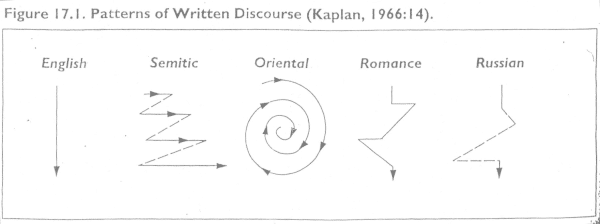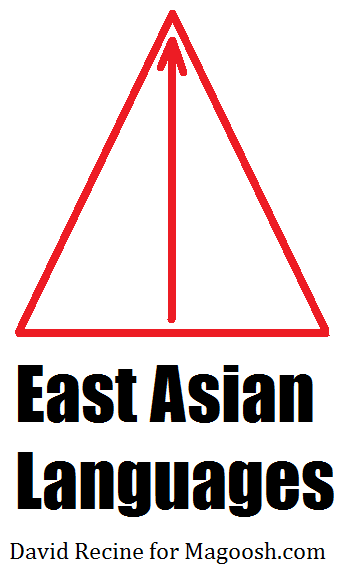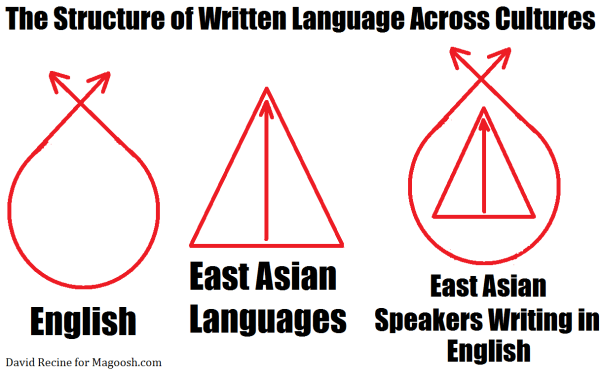In my last post on this subject, I looked at the use of visual images to help students like you understand the structure of written language. To give you a basic idea of how the structure of a written language can be diagrammed, I showed you this famous set of visuals created by B. Kaplan:

As I mentioned last time, the general idea here is good, but the diagrams themselves aren’t the greatest. Written English isn’t that simple. (If it were, students wouldn’t need to come to sites like this for help with their English writing!) And non-English writing probably isn’t as complex and disorienting as the diagram indicates. But you can take B. Kaplan’s idea and use it to make more effective diagrams for your own learning.
I’ve used Kaplan’s basic idea to create a series of diagrams that have helped a lot of my East Asian students improve their English writing skills. These diagrams—and the thinking behind them—have helped my students understand the logic behind written English and connect that logic to the writing abilities they already have in their native languages.
We’ll start with the diagram of English writing. Written English generally follows the pattern exemplified in the five paragraph essay. The writer starts by expressing all of the main ideas, and then explores each idea in greater detail. Finally, an English essay will come back to all of the basic main ideas in the introduction, summarizing and reinforcing them in a conclusion. Written English is a balloon-shaped loop—it starts out at a specific point, where the main ideas are all in one place. Then an English essay “balloons” outward; it expands and fills up with details that support the main ideas. Finally, the essay ends by putting all the most important ideas in one place again. The loop is closed off, and the balloon is tied shut. Written English looks like this:

Now let’s look at a diagram of East Asian writing (“Oriental” writing, as Kaplan calls it). East Asian writing does not start out by putting all the main ideas in one place. Instead, East Asian writing starts out by showing the reader the “big picture”—the broader details that support the main point. This big picture gets narrowed down as the writing progresses, until the written piece ends with a narrow main point, supported by layers of broader support. If English writers inflate their written pieces like balloons, East Asian writers construct their essays like pyramids. Instead of going in a balloon shaped loop, East Asian writers simply build upwards. East Asian writing structure looks like this:

Diagrams that truly capture the logic of your language and English are powerful. By visually comparing East Asian and English writing, you can write in English the way you need to, and you can understand the ways in which the logic of your language and the logic of English are the same. Then you can reshape your native language’s logic and adjust it to the English writing style.
Regardless of language, written discourse serves the same purpose: to support a main idea through a pattern of logic. Because of this, you can take what you already know about the logic of writing in your own language, and apply it to the English pattern. This process looks something like this:

For non-East Asian Magooshers reading this, you can do the same thing with your own language. What does writing in your own language look like? How can you fit its form inside the English balloon? Play with these kinds of visual images—see what you can come up with!





